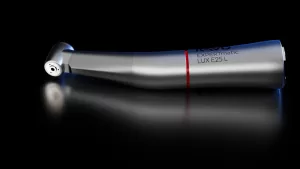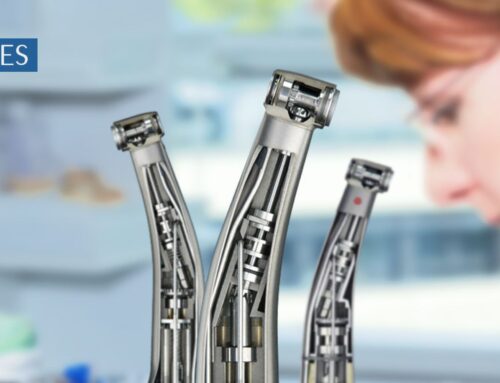Dental handpieces are essential tools in any dental practice, enabling dentists to provide efficient and precise dental care. Among the various dental handpiece brands available, Kavo handpieces are renowned for their quality and durability.
However, like all mechanical devices, Kavo handpieces require regular maintenance to ensure they continue to function at their best. One critical aspect of this maintenance is lubrication. In this comprehensive guide, we will explore the vital role of lubrication in Kavo handpiece repairs and maintenance.
Understanding Kavo Handpieces
Before delving into the specifics of lubrication, it’s essential to have a basic understanding of Kavo handpieces. Kavo is a well-established brand known for its precision engineering and innovative designs. Their handpieces are widely used in dental procedures, and they come in various models, including high-speed handpieces and low-speed handpieces, each with distinct functions.

The Importance of Lubrication in Kavo Handpiece Repairs and Maintenance
Lubrication plays a pivotal role in the overall performance, longevity, and safety of the Kavo handpiece. Here’s why it is essential:
Reducing Friction and Heat
Lubrication in handpieces helps minimize friction between moving parts. When parts rub against each other without proper lubrication, it can lead to increased heat generation, which can damage internal components and necessitate costly Kavo handpiece repairs. Lubrication reduces this heat buildup, preventing premature repairs
Prolonging Lifespan
Regular lubrication can significantly extend the lifespan of Kavo handpieces. By reducing friction and ensuring smoother operation, you decrease the risk of mechanical failure. This leads to a reduced need for costly kavo handpiece repairs or replacements, ultimately saving you money.

Maintaining Precision
Kavo handpieces are prized for their precision, which is crucial in dental procedures. Lubrication ensures that the handpiece maintains its accuracy by preventing irregular movements caused by friction or wear. This precision is vital for procedures like cavity preparation or crown placement.
Preventing Contamination
In a dental setting, handpieces are exposed to various contaminants, including saliva, blood, and debris. Lubrication creates a protective barrier that minimizes the risk of these contaminants entering the handpiece, reducing the chance of contamination and cross-infection.
Smooth Operation
Lubricated handpieces operate quietly and smoothly. This ensures that both the dentist and patient have a more comfortable experience during procedures, as well as allowing for improved control and accuracy during operation.
Lubrication Methods
Proper lubrication is essential, but it’s equally important to know how to do it correctly. There are two primary methods for lubricating Kavo handpieces:
Manual Lubrication
This method involves manually applying a lubricant to the handpiece’s components. While it is effective, it can be time-consuming and may not distribute the lubricant evenly. Dentists must be cautious when using this method to avoid over-lubricating, as excess lubrication can attract debris and potentially harm the handpiece.
Automatic Lubrication Systems
Automatic lubrication systems are a more efficient and precise way of lubricating Kavo handpieces, helping to extend their lifespan and minimize the need for Kavo handpieces. These systems are designed to deliver the right amount of lubricant in the right places, ensuring even distribution and minimizing the risk of over-lubrication. As a result, they save time and reduce the possibility of human error.
When and How to Lubricate Your
The frequency of lubrication depends on the usage and the type of handpiece. However, as a general guideline, Kavo handpieces, which require regular maintenance when necessary, should be lubricated before and after each use. Here’s a step-by-step guide on how to lubricate a Kavo handpiece:
Prepare the Handpiece: Ensure the handpiece is clean and free from any visible debris. Remove any attachments or burs.
Select the Lubricant: Use a lubricant recommended by Kavo for their handpieces. Ensure the lubricant is compatible with the handpiece’s materials.
Manual Lubrication: If using manual lubrication, apply a small amount of lubricant to the bur and chuck, rotating the bur to distribute the lubricant evenly.
Automatic Lubrication: If using an automatic system, follow the manufacturer’s instructions for loading the handpiece into the system and activating the lubrication process.
Operate the Handpiece: After lubrication, run the handpiece for a few seconds to distribute the lubricant throughout the internal components.
Wipe Excess Lubricant: Use a clean, lint-free cloth to wipe away any excess lubricant from the handpiece’s exterior.
Common Lubrication Mistakes to Avoid
While lubrication is crucial for handpiece maintenance, certain mistakes should be avoided:
Over-Lubrication: Excessive lubrication can attract debris and negatively affect the handpiece’s performance. Always use the recommended amount.
Using the Wrong Lubricant: Choosing an unauthorized lubricant risks damaging your Kavo handpiece, paving the way for an expensive Kavo handpiece.
Skipping Lubrication: Regular lubrication should never be neglected. As part of routine maintenance, it must be performed.
Conclusion
In conclusion, lubrication is a fundamental aspect of Kavo handpiece repair and maintenance. It ensures smooth operation, extends the handpiece’s lifespan, maintains precision, and reduces the risk of contamination.
By understanding the importance of lubrication and following the recommended procedures, dental professionals can keep their Kavo handpieces in excellent condition, providing better patient care and saving on costly Kavo handpiece repairs and replacements. Proper lubrication is a small investment that yields significant returns in the long run, making it an essential practice in any dental office.






Leave A Comment